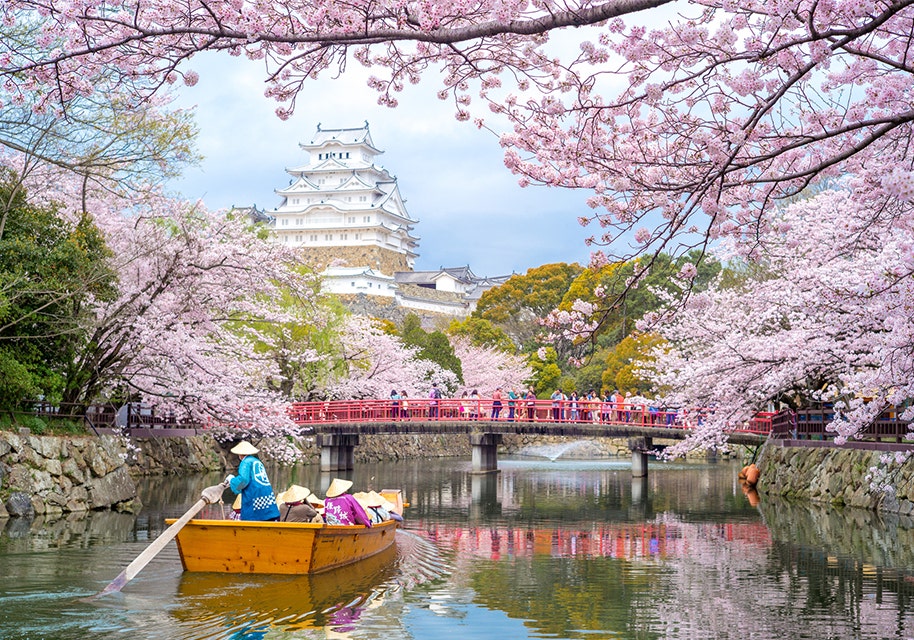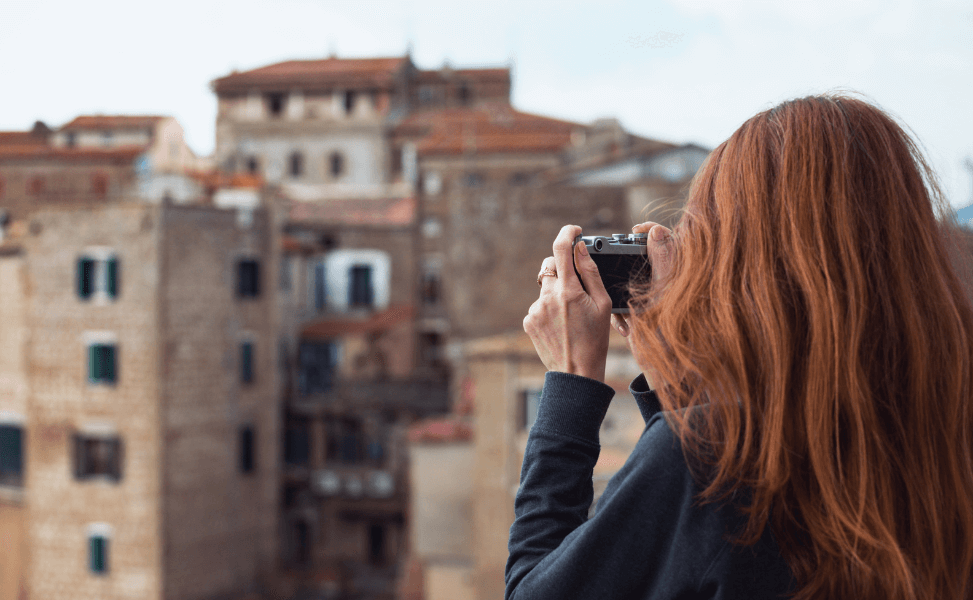
When planning a trip, it's always wise to plan and prepare meticulously. However, if your holiday centers on travel photography, it becomes crucial to put in extra planning efforts. Ensure you have a good understanding of travel photography, thoroughly research your destination, and carry all the necessary equipment to avoid any issues during your vacation. These measures will go a long way in ensuring a smooth and hassle-free trip.
How to Plan Your Travel Photography
Travel photography can be a thrilling creative pursuit that allows you to capture the beauty of the unfamiliar with a unique perspective. However, to ensure you bring back an authentic representation of your travels, it's important to be adequately prepared.
Research the Time of Year

You’ll need to consider the time of year for your particular destination. This will have an impact on your travel camera kit and other small incidentals photographers should always carry.
What kind of weather and which season do you want to shoot? Autumn colour in North America, cherry blossoms in Japan, animal migrations in East Africa, or the blue of the South Pacific all need to be timed just right. Otherwise, your trip of a lifetime is completely wasted - photographically speaking, of course!
Research Famous Landmarks
Even the most amateur photographers will know that you’ll achieve the best photographs either end of the day. But it’s important you actually pick the right time - sunset or sunrise - for your photo.
Certain locations may be draped in shadow during sunrise or sunset. Others might only get a small window of light at an obscure time of day.
Many photographers will visit a landmark several times before returning at the appropriate time of day with their equipment.
Research Cultural Events
Perhaps you’re not actually travelling to see the destination itself but the people. Many events - such as Diwali in India, the Lantern Festival in Thailand, or La Tomatina in Spain - occur on specific days every year.
It’s a good idea to research your destination to see if there are any local festivals or markets on during the time you’re there. It would be horrible to miss out on the biggest event of the year by a small margin!
Essential equipment for travel photography
Travel photography requires a different set of equipment compared to studio or indoor photography. When packing for a trip, it's crucial to prioritize the essentials to ensure you have everything you need while keeping your baggage weight manageable.
One of the most crucial pieces of equipment for travel photography is a camera. The camera should be lightweight, compact, and easy to use. A mirrorless camera or a compact camera with manual settings would be an excellent choice for travel photography.
It's also essential to carry extra batteries and memory cards, as you may not have access to power sources or be able to download your photos frequently. It's a good idea to carry a portable charger as well to ensure that your devices remain charged throughout the trip.
A tripod can be an excellent addition to your travel photography gear, especially if you plan to shoot landscapes, cityscapes, or long exposures. A lightweight, compact tripod is a good option for travel photography.
When it comes to lenses, a versatile zoom lens can be the best option for travel photography. A 24-70mm f/2.8 lens or a 16-35mm f/4 lens can be ideal for capturing both wide-angle landscapes and portraits. A prime lens can also be a good addition for low-light photography.
Lastly, a camera bag that is weather-resistant and provides easy access to your gear can be an excellent addition to your equipment list. A backpack or sling bag can be a good option for travel photography, as they are comfortable to carry around while providing easy access to your gear.

Basic techniques for travel photography
Travel photography can be an exciting and rewarding experience, allowing you to capture unique moments, cultures, and landscapes from around the world. Here are some basic techniques that can help you improve your travel photography skills:
- Use the Rule of Thirds: The rule of thirds is a composition technique where you divide the image into thirds, both horizontally and vertically, and place the subject at the intersection points.
- Pay Attention to Lighting: Lighting can make or break a photo. Be mindful of the lighting conditions and try to shoot during the golden hours (early morning and late afternoon) when the light is soft and warm.
- Include People and Culture: Travel photography isn't just about capturing landscapes and scenery; it's also about capturing the local people and culture. Including people in your photos can add depth and context to your images.
- Use Leading Lines: Leading lines are lines that draw the viewer's eye into the image. This can be a road, a fence, or a pathway. Using leading lines can create a sense of depth and draw the viewer into the image.
- Experiment with Different Perspectives: Don't be afraid to experiment with different perspectives and angles. Try shooting from a high vantage point or getting down low to the ground.
Your job is only to go out and take pictures, wherever and whenever you can! And do your research beforehand by checking out these resources:
- Top Tips for Street Photography
- 10 Ways to Get Better Landscape Photos
- How to Take Environmental Portraits
- How to Photograph Waterfalls
- How to Take Photos in Direct Sunlight
The Best Equipment for Travel Photography
Travel photography can be a challenging yet rewarding experience, as it requires you to capture moments, cultures, and landscapes in different settings and conditions. Having the right equipment can help you achieve the best results and capture stunning photos of your travels.
It’s important for a photographer to always be prepared. Most sightseers walk away from their hotels with money, phone, and appropriate clothing. But photographers will always have a longer checklist.
What Camera to Take for Travel
Although professionals tend to prefer DSLRs, mirrorless cameras are becoming increasingly popular as the go-to travel camera due to their compact size without sacrificing power. Social media influencers may also bring multiple cameras for different types of photography, such as an action camera and a drone.
Read more: How to Choose a Camera for Travelling
What Lenses to Take for Travel Photography
Both mirrorless cameras and DSLRs allow you to swap out lenses, so it’s a good idea to take several lenses to get the most versatility from your camera. Therefore, it's important to choose lenses that can cover a wide range of focal lengths and can help you achieve the type of images you want to capture. A versatile zoom lens, such as a 24-70mm, can be an excellent option for travel photography as it can cover a wide range of focal lengths and can be used for various types of photography.
What Tripod to Take for Travelling
A miniature, lightweight tripod is an essential piece of equipment for any travel photographer. Not only does it provide stability for your camera in low light situations or night scenes, but it also allows you to take self-portraits using a self-timing button.
Investing in a high-quality, miniature tripod is a wise decision for any travel photographer. It will provide you with the stability you need for your shots and allow you to take your photography to the next level, all while being lightweight and easy to carry around.
Your Travel Photography Checklist
Here’s an overview of equipment to consider taking on any given day:
- Your camera body
- A prime lens
- A zoom lens
- Polarising filters
- Lens hood
- Step up rings
- One flash unit
- A lightweight, mini tripod
- Spare memory cards and batteries
Always carry a spare of everything. This means fully charged batteries, memory cards, and lens caps (they are so easy to lose).
You can add to or cull this list as much as you like. The most crucial thing in photography is to know your habits and always be prepared!
At Camera House, we've got all the gear you need to stock up on equipment for future travels. Browse our huge range of camera equipment online today!
